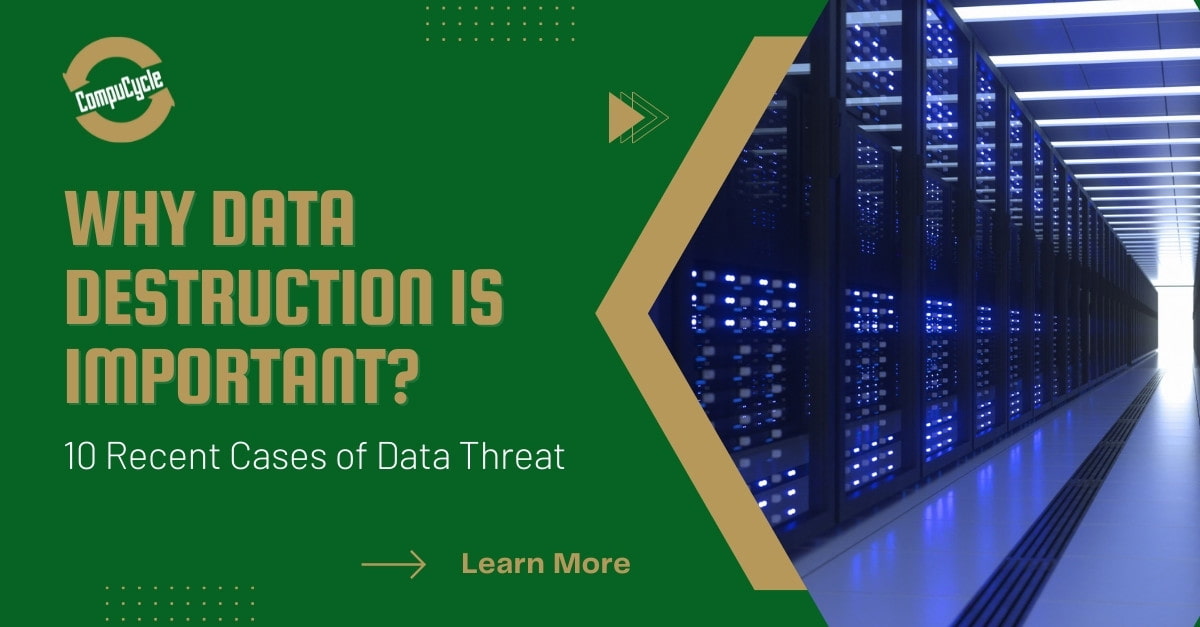The Relevance of Effective Information Devastation Practices in Safeguarding Sensitive Information and Ensuring Computer Safety And Security
In an age where information breaches are increasingly typical, the value of reliable information destruction practices can not be overstated. Organizations face considerable threats when delicate information is inadequately dealt with, possibly leading to unauthorized accessibility and extreme financial consequences. Carrying out durable information damage approaches not just minimizes these risks however likewise lines up with lawful compliance demands, making sure that companies promote their online reputation and foster customer trust fund. The concern remains: what specific approaches can be utilized to boost these methods, and just how can organizations properly incorporate them into their total cybersecurity structure?
Recognizing Data Devastation
Comprehending information destruction is critical in today's digital landscape, where delicate information can quickly be endangered. Effective information destruction includes not just ensuring yet erasing documents that data is irretrievable via extensive methods. This process is important for companies that manage personal client info, intellectual residential property, or internal papers, as any violation can result in extreme financial and reputational repercussions.
Data damage incorporates numerous techniques, including shredding physical media, degaussing magnetic storage devices, and utilizing software-based options that overwrite information numerous times. Each approach offers a specific purpose and must align with the sensitivity of the info being disposed of. For instance, physical damage is often preferred for disk drives having very personal information, while software approaches could suffice for less sensitive info.
Additionally, sticking to sector standards and laws, such as the General Information Defense Law (GDPR) or the Medical Insurance Mobility and Responsibility Act (HIPAA), is critical for conformity and to alleviate legal threats. Organizations needs to establish a robust data devastation plan, train workers on ideal practices, and frequently examine their procedures to make sure that all sensitive info is taken care of safely and efficiently.
Threats of Inadequate Practices
Insufficient information damage practices subject organizations to considerable risks that can have significant consequences. When delicate information is not appropriately dealt with, it continues to be susceptible to unapproved gain access to, which can bring about data violations and identification theft. Such cases not only jeopardize the safety and security of people yet likewise tarnish the company's reputation, causing a loss of customer depend on and potential monetary repercussions.
Furthermore, governing compliance is significantly stringent in several markets. Failing to follow data devastation regulations can cause significant fines and legal activities against companies. These charges can stress funds and draw away focus from core company procedures.
Furthermore, the misuse of recurring information can lead to copyright theft or business reconnaissance, jeopardizing competitive advantages (data destruction). The effect of insufficient information devastation expands past prompt economic losses; it can additionally cause lasting damages to brand name honesty and market placement

Organizations have to recognize that data security is not entirely about avoiding breaches; it additionally incorporates the responsible management of information throughout its lifecycle. Neglecting effective information devastation methods can have disastrous effects, emphasizing the need for durable procedures to mitigate these risks.
Best Practices for Information Damage
Carrying out effective information devastation methods is important for safeguarding delicate info and maintaining conformity with regulative standards. Organizations should take on a multi-faceted method to ensure that information is irretrievable, thus avoiding unapproved gain access to and potential violations.
First, data need to be categorized based upon sensitivity, enabling companies to apply suitable damage methods tailored to the degree of threat. For digital data, utilizing software-based data-wiping devices that abide by sector requirements can effectively overwrite existing information. Physical destruction techniques, such as shredding or degaussing, are crucial for gadgets that store sensitive details, guaranteeing full removal.
Developing a clear data retention policy is essential, detailing the length of time different kinds of details should be maintained prior to destruction. Routine audits of information storage systems are likewise essential to determine obsolete or unnecessary information needing removal.
In addition, training employees on the value of information destruction and the particular procedures to adhere to fosters a culture of safety within the company. Preserving documents of information destruction processes supplies liability and sustains compliance with interior plans and external policies. By sticking to these best practices, companies can substantially alleviate the dangers related to information exposure.
Legal and Conformity Factors To Consider

Failing to abide by these laws can lead to extreme penalties, consisting of substantial penalties and reputational damages. Organizations needs to implement a robust information destruction plan that lines up with these legal structures and gives clear standards on the proper methods of information disposal, whether physical shredding or digital wiping.
Moreover, preserving documents of data devastation activities is crucial for showing compliance during audits or evaluations. By focusing on lawful and conformity factors to consider, companies can boost their information security posture and foster count on with clients and stakeholders, ultimately adding to a more protected data management environment.
Benefits of Effective Information Devastation
Reliable information damage methods prolong beyond mere compliance; they provide significant advantages to companies that prioritize them. By making certain that delicate details is irretrievably damaged, companies alleviate the threat of information violations and the prospective monetary consequences associated with them. This proactive approach not just safeguards versus unapproved gain access to yet additionally boosts the total reliability of the company in the eyes of stakeholders and customers.
Applying durable data damage approaches, such as physical devastation of storage devices or innovative information cleaning techniques, adds to the fortifying of an organization's cybersecurity posture. data destruction. It lowers the likelihood of intellectual building theft and protects exclusive information, therefore keeping an affordable edge on the market

Final Thought
Finally, effective information destruction methods are important for safeguarding sensitive details and enhancing general computer system safety and security. By executing visit here detailed methods such as degaussing, software program, and shredding overwriting, companies can mitigate the risks related to unapproved accessibility and information breaches. Adherence to regulatory requirements, including GDPR and HIPAA, additional enhances conformity and protects against legal repercussions. Ultimately, a commitment to robust data destruction strategies fosters a culture of obligation, therefore strengthening an organization's cybersecurity position and preserving customer trust fund.
